Embroidery is more than just a beautiful art form; it is also a fascinating blend of creativity and mathematics. Behind every intricate design lies a hidden world of mathematical principles that guide the creation process.
From geometric shapes to color theory, stitch count to algorithms, understanding the math of embroidery can elevate your work to new levels of precision and beauty.
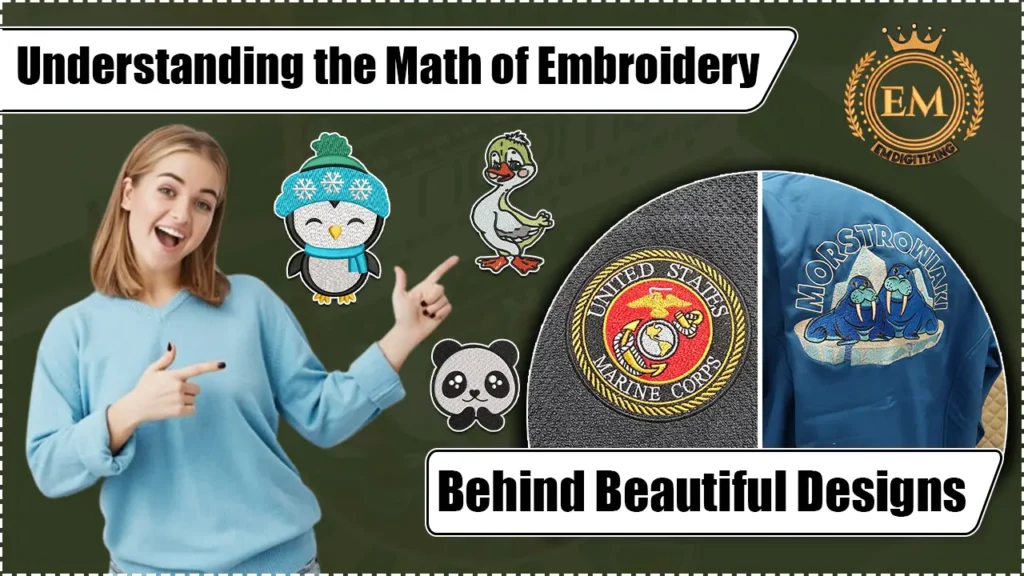
In this article, we will explore the various ways in which math intersects with embroidery, uncovering the key concepts and techniques that can help you unlock the full potential of your embroidery designs.
So join us on this journey as we unravel the math behind the captivating world of embroidery.
Understanding the Math of Embroidery Behind Beautiful Designs
Introduction to the Math of Embroidery:
Embroidery is not just about needles, threads, and fabric; it also involves a surprising amount of math.
Before your eyes glaze over, fear not!
We’re here to break it down in a way that won’t make your head spin.
So, grab your measuring tape and calculator, and let’s dive into the fascinating world where numbers and needlework come together.
Why Math Matters in Embroidery?
You might be wondering why math matters in embroidery. Well, think about it this way: every embroidery design is a visual representation of shapes, patterns, and colors.
And what is the language of patterns and shapes?
You guessed it—mathematics!
Understanding the math behind embroidery can help you create more precise designs, improve stitch quality, and ensure your finished piece looks stunningly professional.
The Role of Geometry in Embroidery Designs:
Geometry may bring back memories of high school math class, but when it comes to embroidery, it’s your secret weapon for creating stunning designs.
Let’s explore how geometry plays a vital role in the world of needle and thread.
Basic Geometric Shapes in Embroidery:
Triangles, squares, circles—oh my!
These simple geometric shapes are the building blocks of embroidery designs. By breaking down complex designs into these basic shapes, you can easily stitch them onto your fabric.
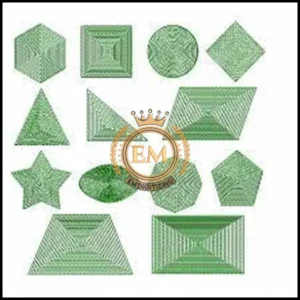
Whether you’re stitching flowers, animals, or even abstract patterns, understanding the underlying geometry helps you maintain proportion and balance in your work.
Incorporating Symmetry and Balance:
Nothing catches the eye quite like a perfectly symmetrical embroidery design. Symmetry brings a sense of harmony and balance to your work, making it visually pleasing.
By utilizing geometric principles, you can ensure your designs have that symmetrical wow factor.
From mirrored images to radial symmetry, geometry will guide you in creating eye-catching embroidery pieces that are well-balanced and pleasing to the eye.
Understanding Stitch Count and Density:
Stitch count and density might sound like technical terms that belong in a factory, but they are crucial aspects of embroidery that affect the quality and appearance of your designs.
Let’s unravel this math of embroidery mysteries and shed some light on their importance.
Importance of Stitch Count in Embroidery:
Stitch count refers to the “number of individual stitches used to create an embroidery design”. It affects the level of detail and the overall appearance of your design.
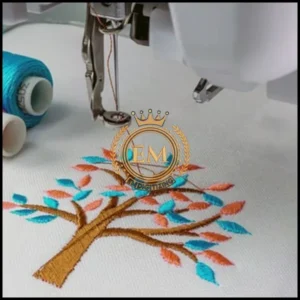
Too few stitches, and your design may look sparse and unfinished. Too many stitches and it might become thick and rigid. Finding the right balance of stitch count ensures your embroidery looks polished and captures the essence of your design.
Calculating Stitch Density for Optimal Results:
Stitch density goes hand in hand with stitch count. It refers to the spacing between each stitch and affects the density or thickness of the embroidery.
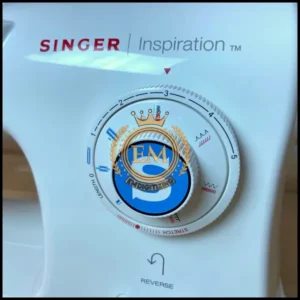
Calculating stitch density involves considering factors like fabric type, thread thickness, and the desired visual effect. Finding the optimal stitch density ensures your embroidery design looks crisp, well-defined, and stands the test of time.
Exploring Color Theory and Thread Selection:
Embroidery is not just about shapes and stitches; color plays a vital role in bringing your designs to life.
Let’s examine how color theory and embroidery thread selection can elevate your embroidery game.
The Impact of Color in Embroidery:
Color has the power to evoke emotions, create visual interest, and convey messages in your embroidery. Understanding color theory, such as complementary, analogous, or monochromatic schemes, can help you select colors that harmonize and enhance your design.
Whether you want your embroidery to be vibrant and eye-catching or subtle and sophisticated, mastering color theory will help you achieve the desired impact.
Choosing the Right Threads for Your Design:
With countless thread options available, choosing the right ones for your embroidery design can be overwhelming. Factors such as thread weight, material, and colorfastness all come into play.
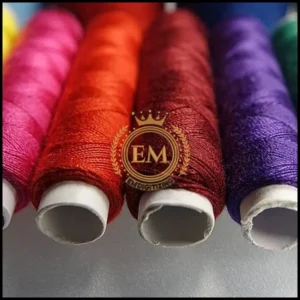
By considering the characteristics of different embroidery threads and their compatibility with your fabric and design, you can make informed choices that result in beautifully stitched and long-lasting embroidery.
Calculating Placement and Size for Embroidery Designs:
Calculations play an important role in the placement of design and size.
Determining the Optimal Placement on Fabric:
Deciding where to place your embroidery design on a piece of fabric can be a bit like trying to solve a puzzle.
But fear not, math can come to your rescue!
By using the math of embroidery, you can determine the optimal placement for your embroidery on the fabric. Consider factors like the fabric’s dimensions, the desired size and shape of the design, and any other elements to be included.
With a dash of math, you’ll be able to find the perfect spot to showcase your embroidery masterpiece.
Sizing and Scaling Embroidery Designs:
When it comes to embroidery, size matters. Whether you’re working on a small patch or a large tapestry, you need to consider the scaling of your design.
Here’s where math steps in to simplify your life. By calculating the desired dimensions and scaling factors, you can easily resize your embroidery design to fit any project.
So, don’t let size constraints cramp your embroidery style – let math handle the numbers while you focus on creating beautiful stitches.
Future of Math in Digitizing Embroidery Designs:
Embroidery is no stranger to technology, and advancements in digitization have revolutionized the industry. With the help of the math of embroidery and specialized software, artists can now convert intricate designs into digital embroidery files with ease.
This digitization process allows for precise control over stitch placement, color changes, and complex patterns.
If you find any difficulty in digitizing embroidery on your own then we suggest you hire an expert. So, EMdigitizing is there for you. We’re offering embroidery digitizing and vector art services at the most affordable rates possible with fast delivery and high quality.
You can get 50% off on your very first order. So, what’re you waiting for, grab this deal and let your imagination to life!
Frequently Asked Questions:
Machine embroidery automates stitching using digital designs, efficiently creating detailed patterns on fabric with specialized machines.
Starting machine embroidery is fairly straightforward with modern machines, though mastering complex designs takes practice.
The stitch count indicates the total number of stitches needed for an embroidery design, affecting both time and thread usage.
The commonly used thread size for machine embroidery is 40 weight, compatible with standard needles, and effective for most designs.
